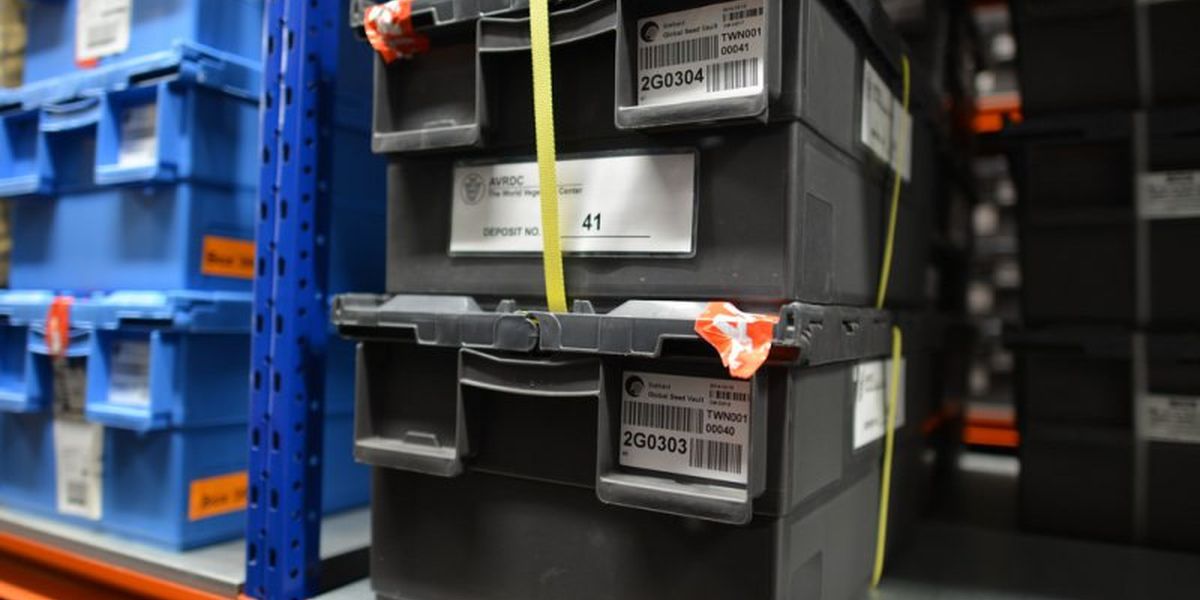Doomsday Vault (World Seed Vault)

The Doomsday Vault is the figurative name of the World Seed Vault located on Spitsbergen. The Norwegians, the initiators of the project, have set themselves an ambitious task - to provide a strategic supply of plant seeds from all corners of the planet in the event of a global catastrophe. Whether the death of the green shell of the Earth is provoked by people or caused by external forces does not matter: the powerful structure will withstand any cataclysms. It is no coincidence that the dry official name was quickly replaced by the bright metaphor of “Doomsday,” because the contents of the vault will become in demand when the bulk of humanity ceases to exist.
History of the repository
Construction of the entrance to the seed storage

In the 20th century, humanity did everything to ensure that their descendants had something to do in the next 200 years. The emergence of nuclear weapons, large-scale man-made disasters, global climate change associated with the melting of ice at the poles - together or individually, these reasons can cause irreversible consequences for the earth's vegetation. Scientists have decided that the inhabitants of our planet should be able to quickly restore lost species in order to provide the usual air composition and food for the entire population.

In the second half of the 20th century, buildings guaranteeing the safety of seeds were built in all developed countries of the world. The Svalbard project became a fundamentally new step in the development of a well-thought-out idea. According to the authors, who have calculated all the options for the development of human history, the repository should be something like a bank room with cells where each state will place duplicate seeds from its national funds. If a disaster occurs in the plant’s homeland, there will always be hope for northern reserves. The idea was highly appreciated by international financial funds and together with the Norwegian government they invested almost $10 million in it. Construction began in 2006, and already in 2008 the storage facility received the first batch of seeds.

Why Spitsbergen?
There were two reasons for choosing the island - geographical, more significant, and political. The climatic disadvantages of the archipelago turned into advantages when predicting the success of the project. In permafrost conditions, due to which Svalbard does not even have its own cemetery, it is easier to ensure the safety of reserves in the event of a breakdown of all equipment and lower energy costs for servicing equipment. Formally, the Doomsday Vault is located in the town of Longyearbyen. This modest village with rows of colorful houses and just 2,000 inhabitants is the official capital of the archipelago. In fact, the facility was built about a kilometer south of the local airport runway, and the nearest housing is another 3 km east.

Other travelers prefer to come here by plane from the largest cities in Norway - Oslo and Tromsø. In recent decades, summer sea cruises along the coast of the northern part of the country have become popular. Another way to fully enjoy the advantages of the archipelago is to enroll in the Svalbard International University, opened right in Longyearbyen. It trains specialists in biology, geology, geophysics of the Arctic, and engineers working in the Far North. The training program is distinguished by an abundance of hours of field practice in extreme conditions, requiring remarkable health from students. The lack of people on the island is more than compensated by the abundance of polar bears, who are not afraid to enter the territory of villages and tourist camps.
The facility was built at an altitude of 130 m above sea level. This ensures that a potential global flood, triggered by melted ice in the Arctic and Antarctic, will bypass it. The region lies outside the seismic hazard zone, so earthquakes also do not threaten the reinforced concrete bunker.

From a political point of view, Svalbard is ideal for international projects. Formally belonging to Norway, the island received special status back in 1920. Since then, its subsoil can be developed by about 50 states that have become parties to the treaty. Due to the difficult climate, only Norwegians and Russians are now among those wishing to mine coal here, but many years of experience in international cooperation can be used to implement a new project.

Object design
The natural body of the storage facility was a rock; the hermetically sealed entrance to it was reinforced with meter-thick reinforced concrete walls that would withstand even a direct hit from a nuclear warhead. To get inside, to a depth of 120 meters, the guest needs to go through a lock chamber.

Then the visitor, having passed through the concrete corridor, is greeted by spacious halls where he will experience a year-round temperature shock of −18 °C. Constantly switched on refrigeration units help to achieve such indicators. In the event of a simultaneous breakdown of all equipment, the temperature will only rise slightly in a few weeks, so the seeds will retain the ability to germinate until people get to them.
According to project coordinators, at this temperature, wheat, barley and pea seeds can be stored for up to a thousand years.

Each country has its own section in the repository; work in it can only be done with official permission from the authorities of the “investor” state. Seeds, wrapped in foil, are placed in plastic bags and then packed into containers placed on racks. Motion sensors monitor any actions of the people inside, excluding sabotage.

The Doomsday Vault is one of those attractions that are more enjoyable to read about while sitting at your computer than to witness them with your own eyes. A difficult climate with above-zero temperatures only in July-August, an abundance of short-term precipitation, sharp gusts of wind, and frequent fogs are a good reason to abandon walks around the island in favor of a virtual trip. There is another reason: access to strategic reserves is open only to scientists who have received special permission from their government. Of course, the press was invited to the opening, but since then mainly geneticists and breeders have been interested in the contents of the object. No one is forbidden to look at the entrance to the vault from the outside, but the sight will not be very educational: a small bridge will lead visitors from the compact parking lot to massive doors at the base of a narrow gray rectangle that goes straight into the rock.


